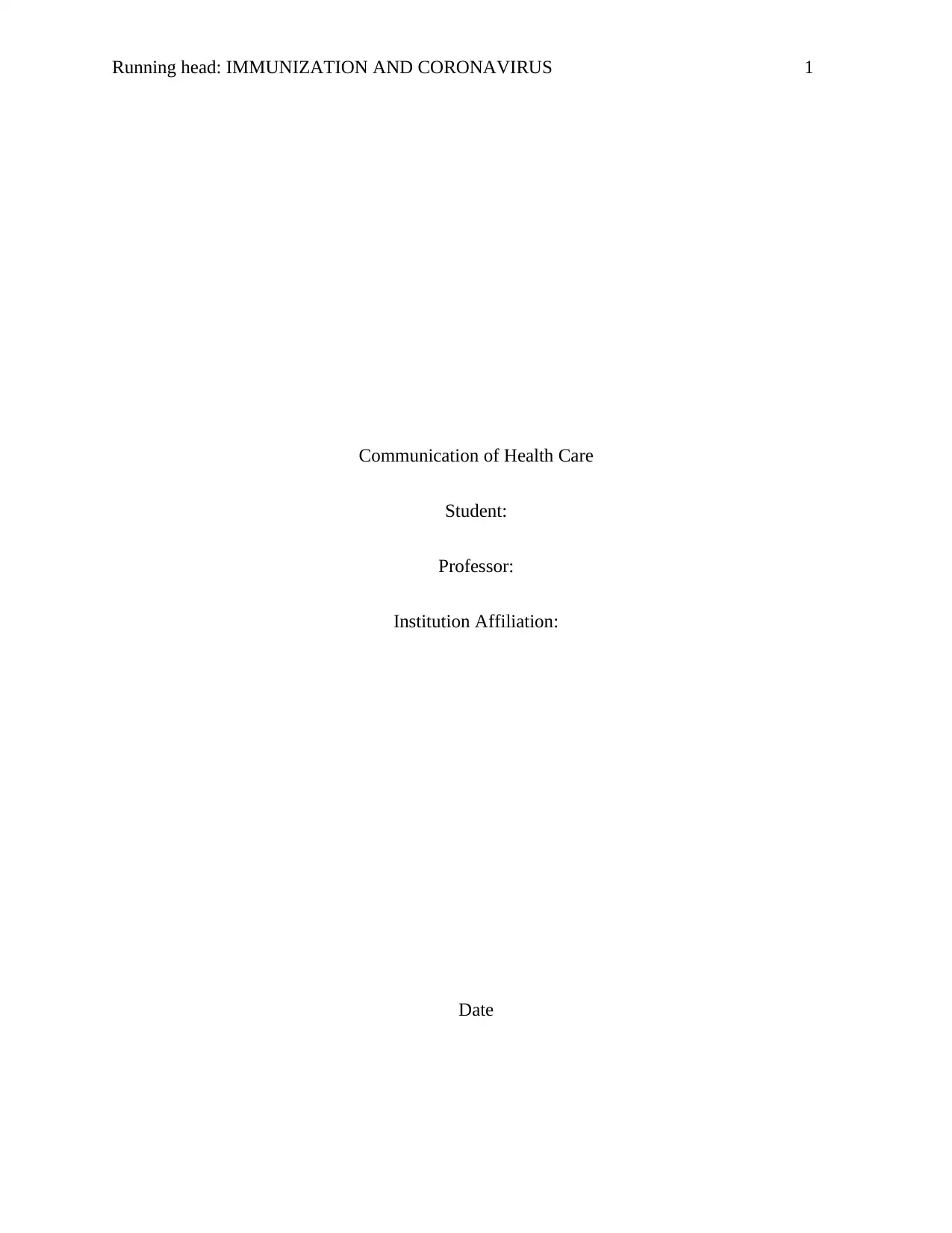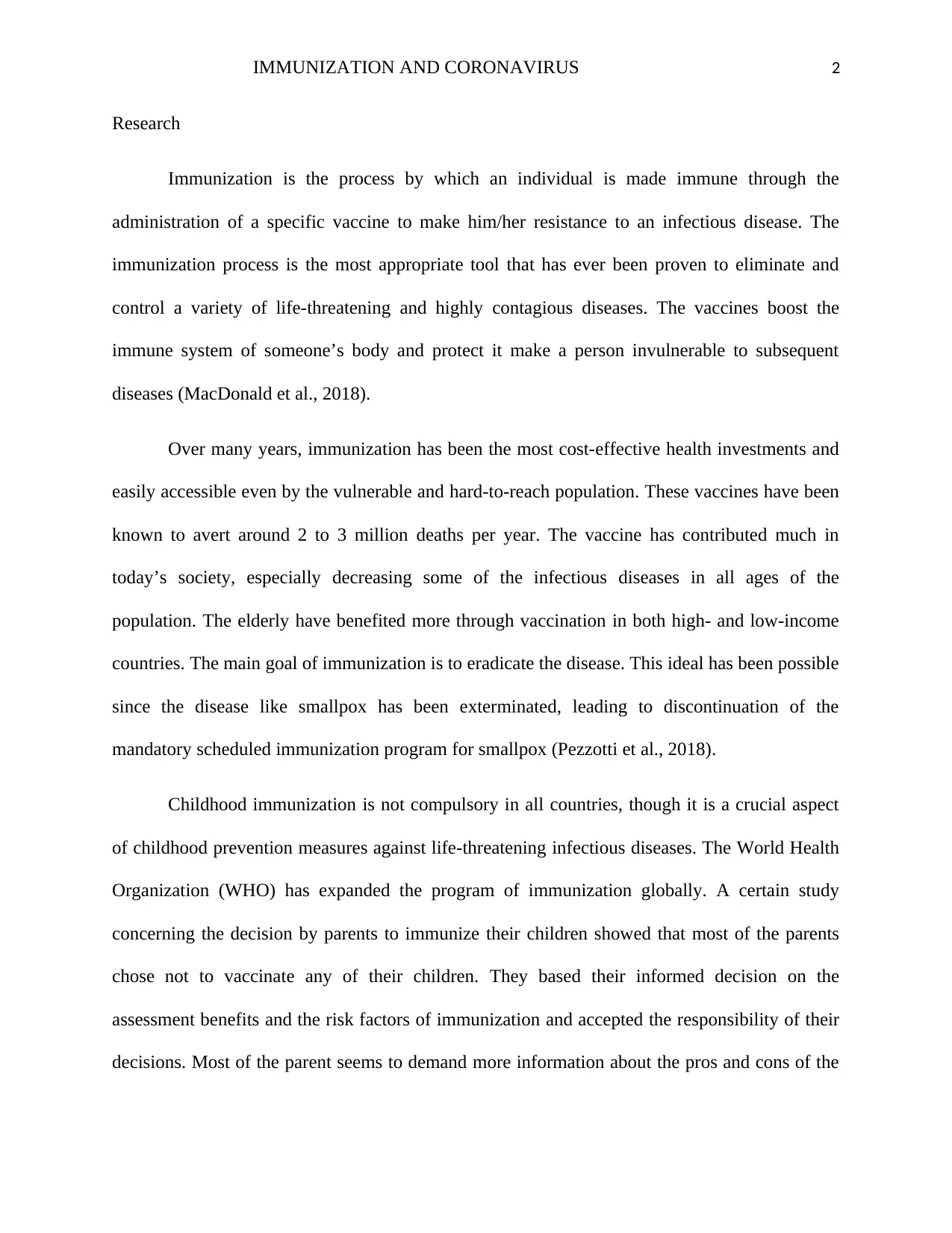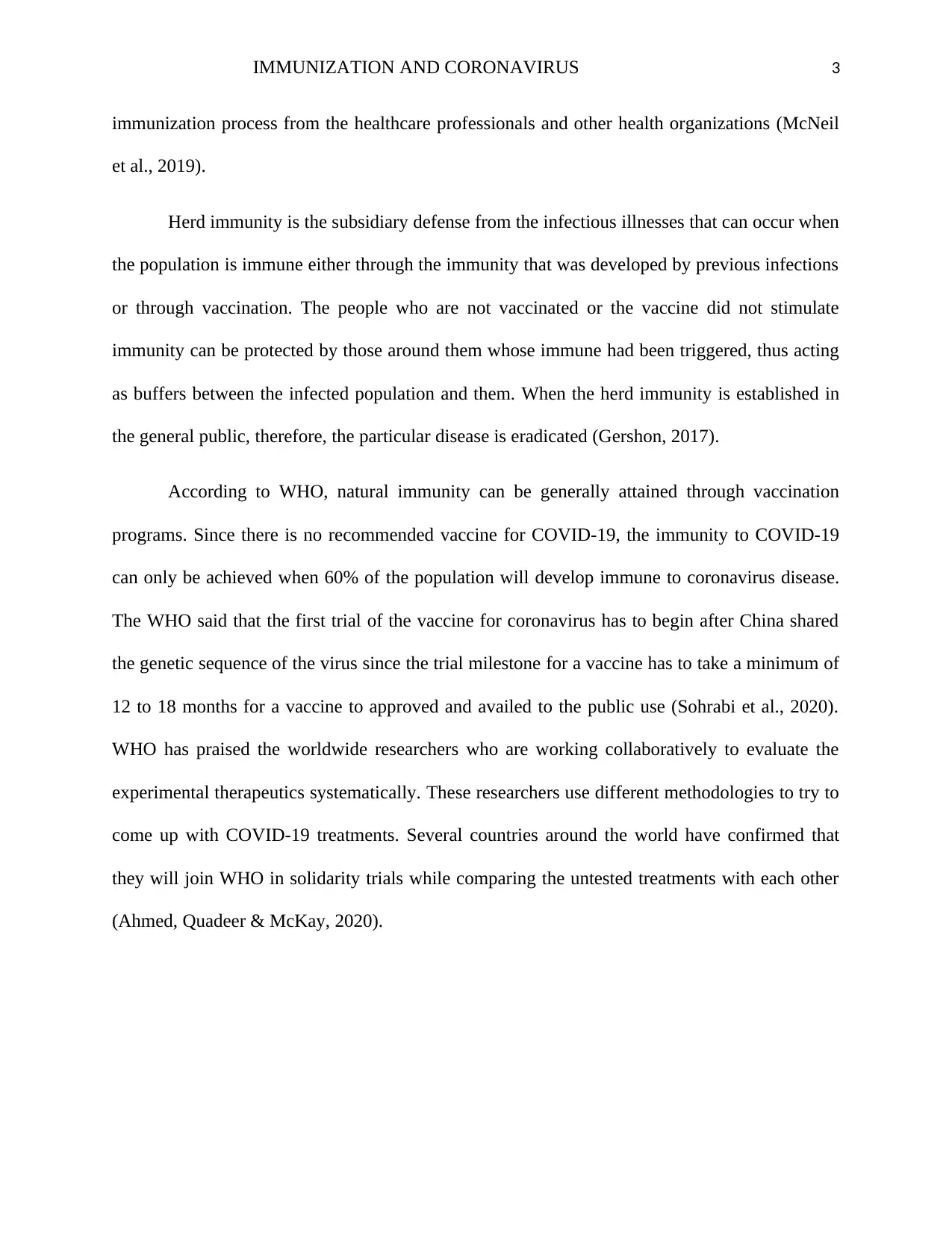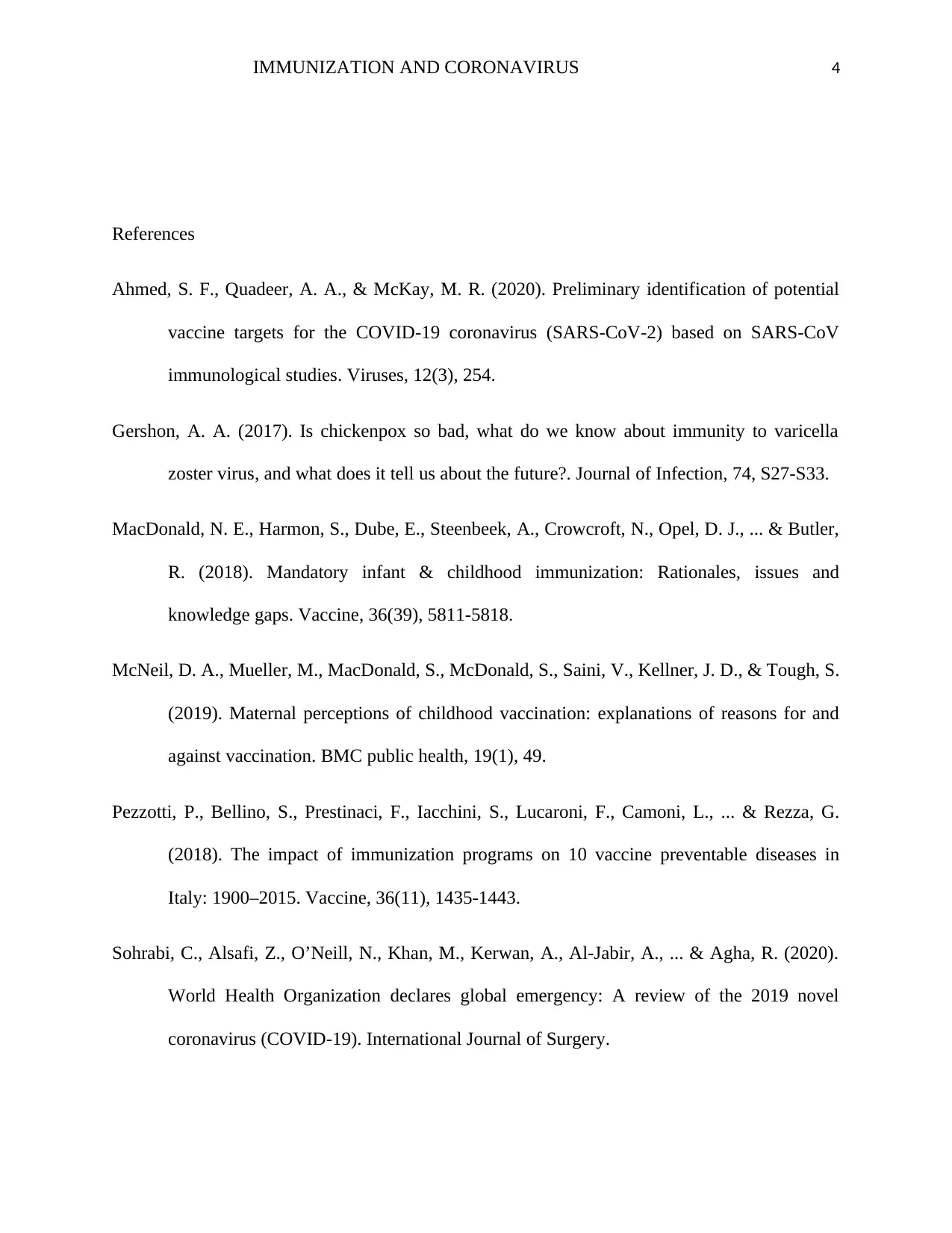Immunization and Coronavirus: Health Communication Research Report
VerifiedAdded on 2022/09/23
|4
|937
|21
Essay
AI Summary
This essay delves into the critical role of immunization in public health, with a specific focus on its relevance in the context of the coronavirus pandemic. It begins by defining immunization as the process of making an individual immune to infectious diseases through vaccination, emphasizing its historical significance in eliminating and controlling life-threatening illnesses. The essay discusses the benefits of vaccines in boosting the immune system and preventing diseases, highlighting their cost-effectiveness and accessibility. It examines the concept of herd immunity and its importance in protecting unvaccinated individuals, particularly in the absence of a COVID-19 vaccine. Furthermore, the essay explores the World Health Organization's (WHO) efforts in expanding immunization programs globally and the ongoing research and collaborative trials for COVID-19 treatments. The essay references several studies and reports to support its arguments, including parent's decisions on immunization, and the need for more information from healthcare professionals. The essay concludes by underscoring the importance of immunization as a crucial public health measure and the global efforts to combat infectious diseases, including the ongoing coronavirus pandemic.
1 out of 4











![[object Object]](/_next/static/media/star-bottom.7253800d.svg)